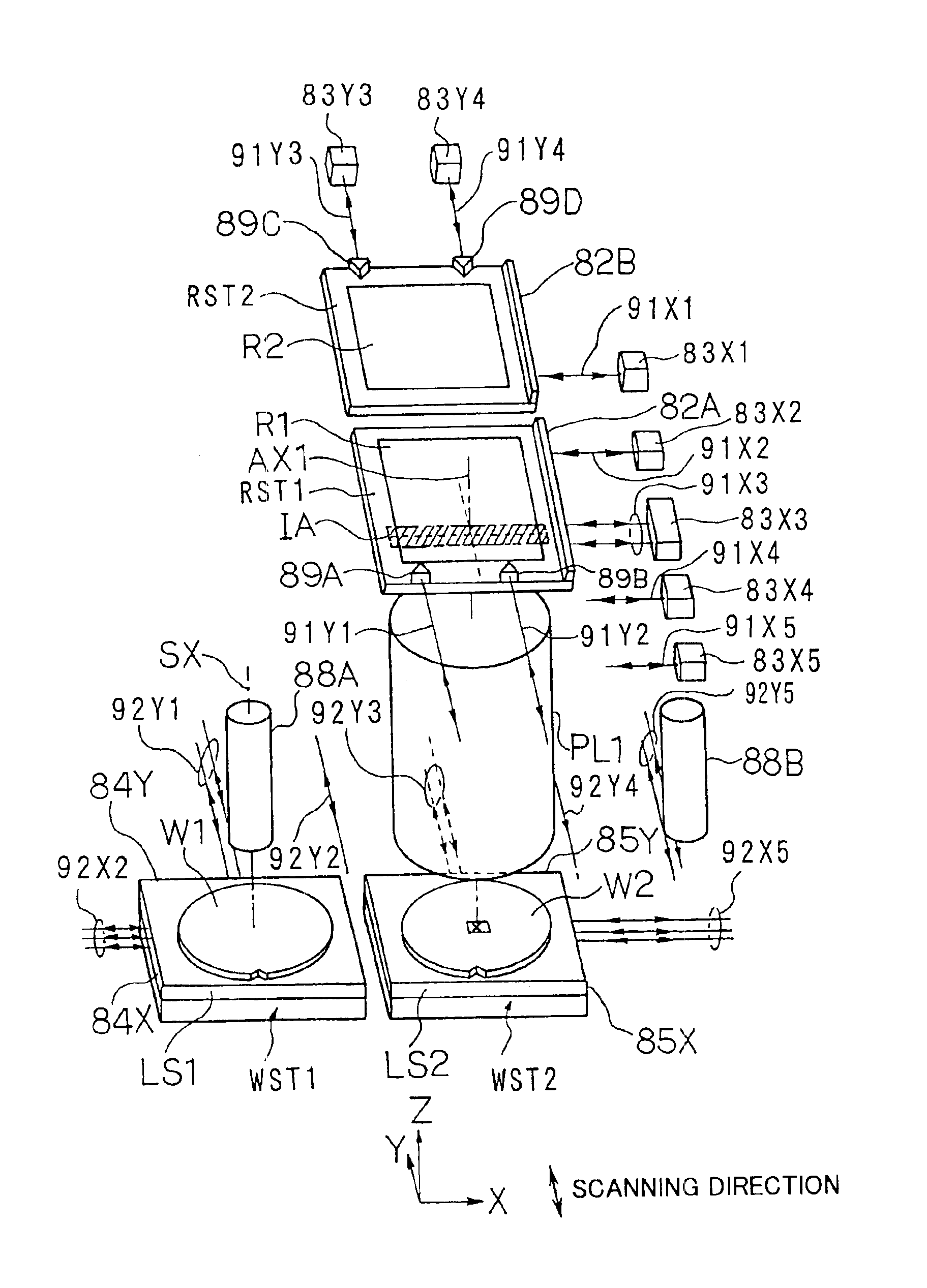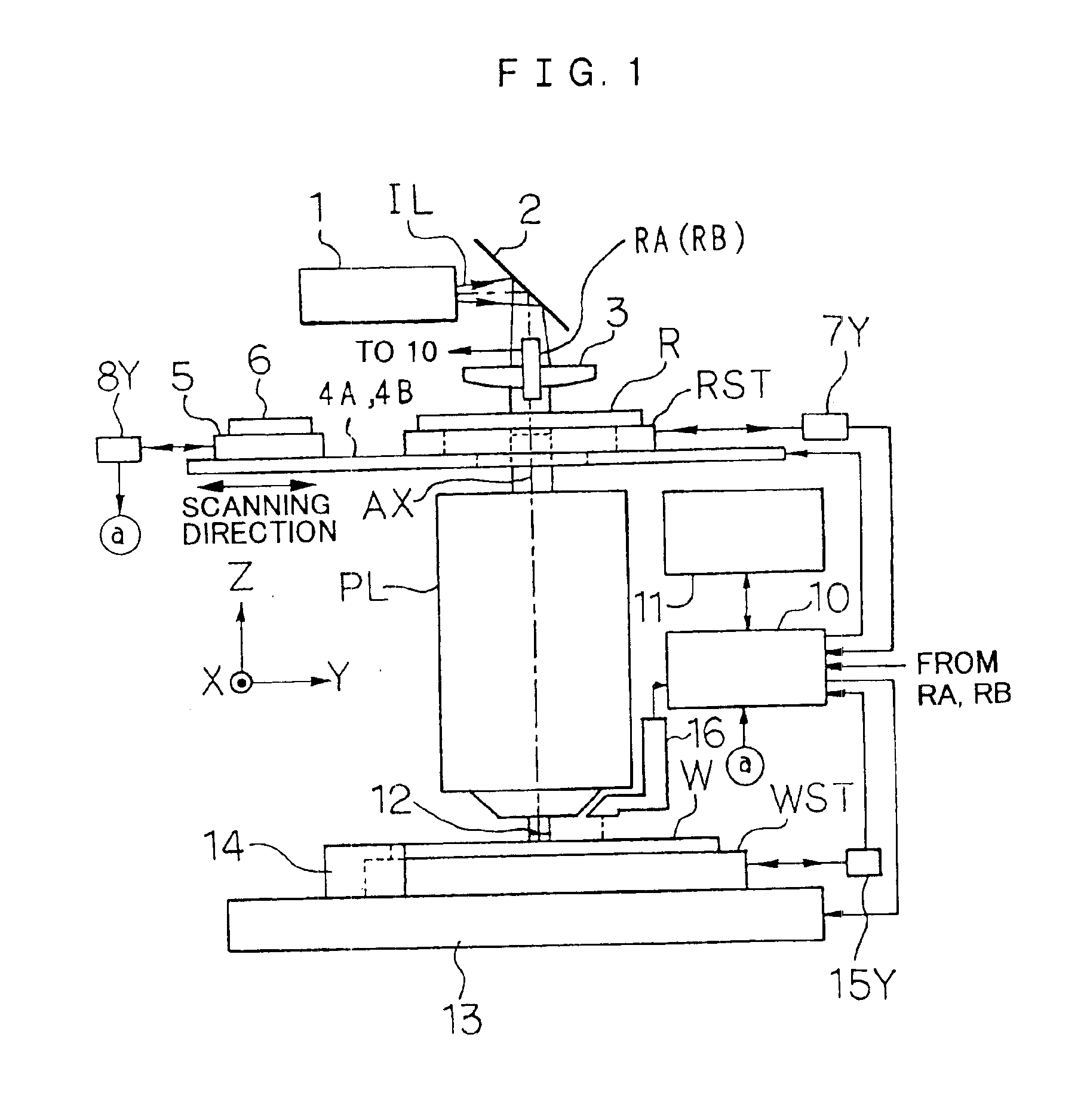Stage device and exposure apparatus
a technology of exposure apparatus and stage device, which is applied in the direction of photomechanical apparatus, instruments, optics, etc., can solve the problems of entailment of tremendous technical difficulty, stage weight, and overall size of the stage, and achieve the effect of increasing the throughput of the exposure step and speed
- Summary
- Abstract
- Description
- Claims
- Application Information
AI Technical Summary
Benefits of technology
Problems solved by technology
Method used
Image
Examples
first embodiment
[0063]A preferred first embodiment of the present invention will now be described with reference to FIGS. 1 to 4. This is an example of applying the present invention to a step-and-scan type of projection exposure apparatus.
[0064]FIG. 1 illustrates the projection exposure apparatus in this example. In FIG. 1, exposure light IL is emitted during exposure by an illumination system 1 including an exposure light source, a beam shaping optical system, a fly-eye lens for making the illumination distribution uniform, a light quantity monitor, a variable aperture stop, a field stop, a relay lens system, and so forth. This light IL illuminates a slit-shaped illumination region of the pattern side (lower side) of a reticle R via a mirror 2 and a condenser lens 3. This exposure light IL can be excimer laser light such as KrF (248 nm wavelength) or ArF (193 nm wavelength), a higher harmonic wave from a YAG laser, an i-ray from a mercury vapor lamp (365 nm wavelength), or the like. The illuminat...
second embodiment
[0098]the present invention will now be described through reference to FIGS. 5 to 12. This is an example of applying the present invention to a step-and-scan type of projection exposure apparatus in which exposure is performed by the double exposure method.
[0099]FIG. 5 shows the simplified structure of the projection exposure apparatus in this example. In FIG. 5, the projection exposure apparatus of this example comprises a stage device equipped with wafer stages WST1 and WST2 as a plurality of movable stages for supporting and independently moving two-dimensionally wafers W1 and W2 as sensitive substrates on a base plate 86; a projection optical system PL1 disposed above this stage device; a reticle drive mechanism for driving in a specific scanning direction a reticle R1 or R2 (see FIG. 6) as a mask above the projection optical system PL1; an illumination system for illuminating the reticles R1 and R2 from above; and a control system for controlling these various components. In th...
PUM
 Login to View More
Login to View More Abstract
Description
Claims
Application Information
 Login to View More
Login to View More - R&D
- Intellectual Property
- Life Sciences
- Materials
- Tech Scout
- Unparalleled Data Quality
- Higher Quality Content
- 60% Fewer Hallucinations
Browse by: Latest US Patents, China's latest patents, Technical Efficacy Thesaurus, Application Domain, Technology Topic, Popular Technical Reports.
© 2025 PatSnap. All rights reserved.Legal|Privacy policy|Modern Slavery Act Transparency Statement|Sitemap|About US| Contact US: help@patsnap.com



